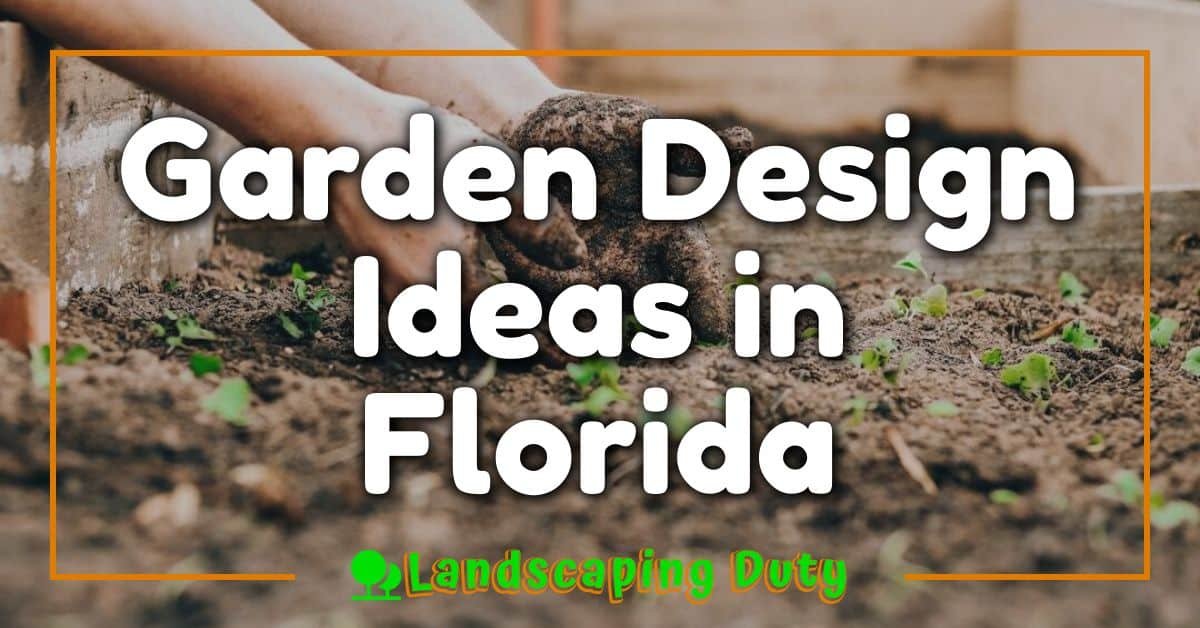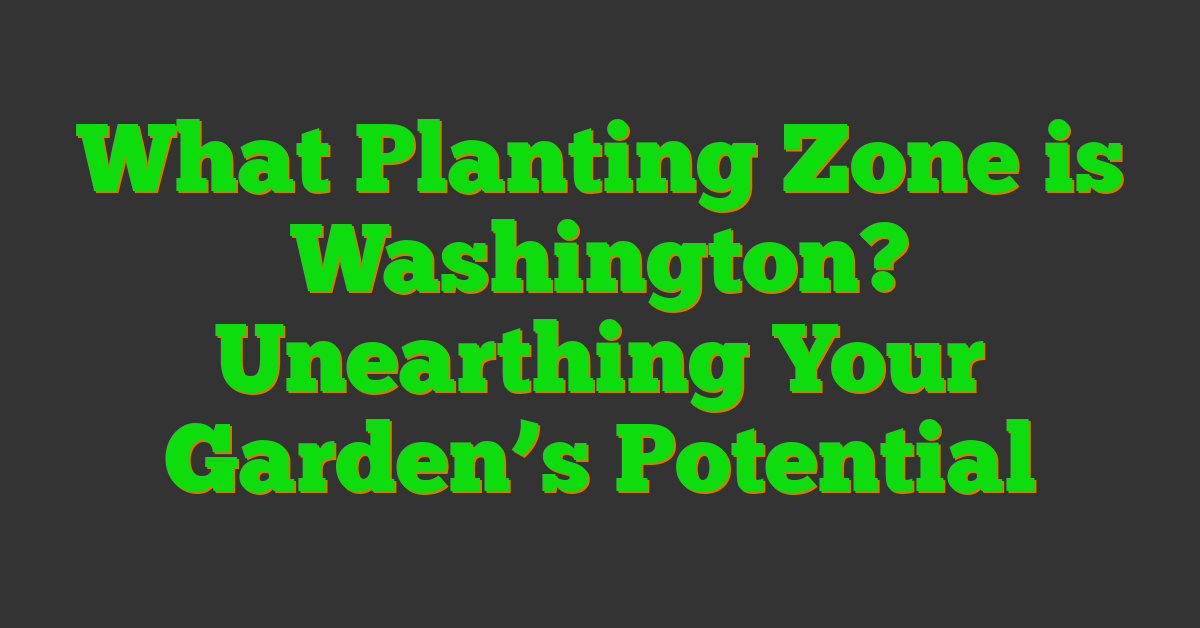Living in the Sunshine State certainly has its perks, doesn’t it? You’ve got that vibrant sun, clear blue skies, and sandy beaches just minutes away. But what really sets Florida apart is your ability to create a breathtaking garden that can thrive year-round!

Let’s face it: garden design isn’t always a walk in the park. It takes careful planning and a keen eye to bring out the best in your green space. With Florida’s unique climate and diverse range of plant life, you’re spoiled for choice when it comes to designing your dream garden.
So you’ve got this outdoor space – maybe it’s small or perhaps it’s sprawling – either way, don’t worry! We’re here to help you transform that blank canvas into a stunning oasis filled with lush plants, striking colors and beautiful accents. From choosing the right plants for your climate zone to arranging them for maximum visual impact – we’ll guide you through each step of the journey towards creating YOUR perfect Floridian paradise.
Understanding Florida’s Climate for Garden Design
So, you’ve got your green fingers twitching and you’re ready to take on the world of Florida gardening. But before we go straight into choosing plants, let’s take a moment to understand Florida’s unique climate. It’s more than just sunshine and oranges down here!
Florida has a subtropical-to-tropical climate, which is ideal if you’re keen on growing exotic plants that won’t survive in colder states. The average annual temperature often hovers around the 70s (Fahrenheit), making it perfect for many lush, tropical species.
However, don’t let all that warm weather fool you! There are plenty of challenges to navigate in this gardeners’ paradise. For starters, Florida experiences heavy rainfall from June through September – we’re talking about an average of 7-9 inches per month! This means water-loving plants will thrive but be careful not to drown those less tolerant ones!
Different regions have their quirks too:
- Northern Florida sees cooler winters with occasional frosts.
- Central Florida enjoys a moderate climate with less frost.
- Southern Florida rarely dips below 60 degrees even during winter months.
Understanding these regional differences can really help tailor your garden design choices.
And then there’s hurricane season – yep, gardeners have to deal with that too! From June till November, strong winds and torrential rains can cause havoc in your little patch of heaven. Choosing sturdy plant varieties or employing windbreak designs could save your precious green space from Mother Nature’s tantrums.
Remember that every cloud has a silver lining though: while hurricanes might seem like a gardener’s worst nightmare, they also bring large amounts of nutrient-rich organic matter onto land from the sea – great news for soil fertility!
In short? Gardening in Sunshine State is anything but boring! With understanding comes preparation; so arm yourself with knowledge about Florida’s climate and you’ll be well on your way to creating a stunning Floridian garden.
Choosing the Right Plants: Native Species in Florida
Diving into the world of Florida gardening, you’ll quickly discover a wealth of native species that thrive in this unique climate. These plants not only bring beauty to your garden but also serve as a haven for local wildlife and contribute to the environment’s balance.
Why should you go native? Well, it’s simple! Native plants require less watering and fertilizers because they’re adapted to Florida’s climate, soil, and pests. That means lower maintenance costs for you and less impact on our planet – a win-win situation!
Check out some of these fantastic native species:
- The Southern Magnolia – With its glossy leaves and large fragrant flowers, it’s no wonder this tree is a staple in many Floridian gardens.
- Firebush – If you want something attractive to hummingbirds and butterflies, look no further than this fiery red shrub!
- Coral Honeysuckle – This vibrant vine with trumpet-shaped flowers offers an excellent food source for wildlife.
Now let’s take a peek at some numbers. According to the University of Florida IFAS Extension service:
| Plant Type | Number of Native Species |
|---|---|
| Trees | 250+ |
| Shrubs | 300+ |
| Vines | 100+ |
That’s quite the selection!
You might be wondering where you can find these native plants. Luckily there are numerous plant sales, nurseries, and even online stores specializing in indigenous species ready to help green up your garden!
Remember though – planting natives doesn’t mean disregarding care completely. They still need regular pruning and monitoring for signs of disease or pest infestations.
So go ahead! Inject some Floridian flair into your garden design by choosing right from nature’s palette right here at home. Your wallet will thank you – not to mention our local birds and butterflies!
« Garden Design Ideas in Arkansas: Your Guide to a Southern Eden Garden Design Ideas in Georgia: Your Ultimate Guide for a Beautiful Backyard »
Designing a Tropical Garden: Key Elements and Ideas
Ever dreamt of having your own slice of tropical paradise, right there in your Florida backyard? Well, you’re in the right place. Let’s dive into some key elements and ideas that’ll turn that dream into reality!
First up, let’s talk plants. Your garden isn’t going to scream “tropical” without the right flora. We’re talking lush greenery like palms, ferns, and bamboo. How about adding some vibrant colors with hibiscus or bird-of-paradise? You see, the beauty of Florida is its climate; it allows you to cultivate a wide range of exotic plants.
- Palms: These are quintessential for any tropical garden. Think coconut palm or queen palm.
- Ferns: They add an understated elegance with their delicate fronds.
- Bamboo: It grows quickly and offers privacy – a great choice if you’re aiming for an enclosed feel.
- Hibiscus/Bird-of-paradise: Their bright flowers will give your garden those pops of color.
Next on our list is water features. Imagine a small waterfall cascading into a pond filled with colorful koi fish—it’s not just visually appealing but also adds a soothing auditory element! Water features can be as simple as installing a birdbath or as intricate as creating an entire pond ecosystem.
Lastly, think about lighting. As dusk falls over Florida, your tropical garden should continue to shine! Strategically placed lights along paths or highlighting specific plants can create magic under moonlight. Solar-powered lanterns are eco-friendly options that save energy while offering soft illumination for your nighttime strolls.
This might seem like quite the project—and sure it is—but remember: Rome wasn’t built in a day! Take it one step at a time; start small and gradually build-up over months or even years. Your patience will pay off in the end with a beautiful tropical garden that’s bound to be the envy of your neighborhood!
Incorporating Water Features in Your Florida Garden
Adding a splash of water to your backyard oasis can transform it into a tropical haven. Ponds, fountains, and even small waterfalls are just some of the possibilities that you might consider.
In Florida’s hot climate, water features not only look beautiful but also serve as natural coolants. They can help maintain a comfortable temperature around your garden area. Plus, they add an element of tranquility and calmness with their soothing sounds.
It’s worth mentioning that you’ve got plenty of options when it comes to choosing the type of water feature. For instance:
- Ponds: A well-placed pond can act as the focal point in your garden landscape.
- Fountains: From large sculptural pieces to smaller tiered designs, fountains are versatile and highly customizable.
- Waterfalls: These offer a dynamic visual effect while creating pleasant background noise.
Now if you’re worried about mosquitoes – Florida’s notorious tiny intruders – opt for moving water features like fountains or waterfalls which aren’t typically favorable breeding grounds for them.
Another great benefit? Wildlife! Birds, bees, butterflies – all these lovely creatures will be attracted by the fresh source of water in your garden. You’ll have yourself a lively little ecosystem right there!
So go ahead and dabble with incorporating some H2O into your green space. It’s sure to make things more refreshing and inviting during those warm Florida months. Remember though; like any other aspect of gardening, planning is key. Make sure your chosen feature complements the overall design scheme so everything flows together beautifully!
Low Maintenance Landscaping: Xeriscaping in Florida
Ever dreamt of a stunning garden that practically takes care of itself? Well, you’re not alone! People all over the Sunshine State are turning to xeriscaping. It’s a creative and eco-friendly landscaping method, using plants that thrive in our local climate and soil conditions. That means less work for you and more time enjoying your beautiful outdoor space.
Why is xeriscape such a big deal in Florida, you ask? For starters, it’s perfect for our subtropical climate. With average rainfall varying significantly throughout the year, plants native to Florida are adapted to survive both dry spells and periods of heavy rain. Plus, with temperatures regularly reaching 90°F (32°C) or higher during summer months, heat-tolerant plants are essential.
Just imagine your backyard filled with vibrant Blanket Flowers or Beach Sunflowers swaying gently in the sea breeze! Here are some favorites among Floridian xeriscapers:
- Coontie
- Saw Palmetto
- Muhly Grass
- Gaillardia (Blanket Flower)
- Helianthus debilis (Beach Sunflower)
But it’s not just about looking pretty! Xeriscaping can save an impressive amount of water. According to the Southwest Florida Water Management District, traditional landscapes can use up to 50% of total household water consumption. On the other hand, a well-designed xeriscape garden can reduce landscape water use by 50 – 75%. Now that’s what we call smart gardening!
So how do you start your journey into low maintenance landscaping? First off, consider your garden space and climatic conditions. Then choose suitable drought-resistant plants (remember those lovely Beach Sunflowers?). Lastly, plan out each plant’s location based on its need for sunlight or shade.
Getting into xeriscaping doesn’t have to be hard or expensive. It’s about working with nature, not against it. So why not give your green thumb a break and let Florida’s native plants do the heavy lifting? You’ll end up with a garden that’s not only gorgeous to look at but also kind to the environment (and your water bill!).
Creating Wildlife-Friendly Spaces: Attracting Local Fauna
Ever dreamed about creating your own little slice of wilderness right in your Floridian backyard? You’re not alone. More and more folks are looking to invite local wildlife into their gardens, crafting spaces that nurture and sustain native fauna.
First things first, let’s talk plants! Floridian fauna is attracted to native plants, so that’s where you’ll want to start. It’s all about picking the right mix – think wildflowers for butterflies, berry-producing shrubs for birds, and host plants for caterpillars. You’d be amazed how quickly these critters will find their way into your garden once you start planting!
But it doesn’t stop at vegetation. Water sources play a crucial role too. Whether it’s a birdbath or a small pond, providing fresh water can attract an entirely new group of animals to your garden. And don’t forget cover! Animals need safe places to hide from predators and harsh weather conditions.
Here are some Florida-friendly plant suggestions:
- Wildflowers like Tickseed (Coreopsis spp.) or Blanket Flower (Gaillardia pulchella) for butterflies
- Berry-producing shrubs such as Beautyberry (Callicarpa americana) or Simpson’s Stopper (Myrcianthes fragrans) for birds
- Host plants like Coontie (Zamia pumila) or Corkystem Passionflower Vine (Passiflora suberosa) for caterpillars
Remember, balance is key when creating wildlife-friendly spaces. A well-planned garden should have a good mix of plant types to support different species throughout the year. So go ahead; create that vibrant ecosystem right outside your door!
Creating wildlife-friendly spaces isn’t merely about beautification; it’s also important from an ecological perspective. By inviting local fauna into our gardens, we’re contributing towards biodiversity conservation in our very own way. So, let’s roll up those sleeves and get planting!
Practical Tips for Sustainable Gardening in Florida
So you’re ready to roll up your sleeves and dive into the world of sustainable gardening? That’s great news! You’ll find it’s an exciting journey filled with colorful blooms, fresh veggies, and that oh-so-satisfying feeling of doing something good for the planet. But before you grab those gardening gloves, let’s talk about some practical tips specifically designed for Florida gardens.
First off, choose native plants. Why? Well they’ve adapted to the local climate and soil conditions. Plus, they require less water than non-native species which is a win-win situation in sunny Florida. Native plants like Blanket Flower or Black-eyed Susan are both beautiful and hardy choices.
How about composting? It’s a fantastic way to enrich your garden soil without relying on chemical fertilizers. Just imagine transforming your kitchen scraps into nutrient-rich food for your plants! Not only does this reduce waste but also improves soil health – a critical aspect of sustainable gardening.
Watering wisely should be high on your list too. Did you know overwatering can actually harm plants more than underwatering? Try using drip irrigation or soaker hoses which deliver water directly to plant roots reducing evaporation. Also important: Water early in the morning when temperatures are cooler.
Let’s not forget about pest control now; remember, not all bugs are bad! Ladybugs and spiders can actually help control pests that could harm your plants. Consider creating habitats to attract these beneficial insects instead of reaching out for pesticides right away.
Last but definitely not least: mulching! Mulch conserves moisture (remember we said watering wisely?), suppresses weeds and even provides nutrients as it breaks down over time – triple bonus!
There you have it folks – just a few practical tips to kick-start your sustainable gardening adventure in sunny Florida! Happy planting!
Conclusion: Bringing Your Florida Garden Design to Life
So, you’ve made it this far and your head is probably buzzing with all the creative possibilities for your garden design. You’re now in a great position to go ahead and bring your own little slice of Florida paradise to life.
Remember that there’s no right or wrong when it comes to designing your garden. It’s supposed to be a reflection of you, so don’t shy away from adding personal touches. Does an abundance of tropical plants make you feel like you’re vacationing in the Keys? Or maybe a clean-lined modern look pairs perfectly with your Miami-style architecture? Whatever it is that gets you excited about spending time outdoors, let that guide your choices.
Don’t forget about practicality though. Consider how much maintenance you’re willing to put into your garden. If mowing isn’t really your thing, opt for some low-maintenance ground cover options instead of grassy lawns. Think about how often you’ll use certain features too – if outdoor cooking doesn’t appeal then skip the fancy grill setup.
Here are some final tips:
- Start small – don’t try to overhaul everything at once.
- Be patient – gardens take time, especially if you’re growing from seed.
- Experiment – trial and error will eventually lead to a garden design that works best for both aesthetics and functionality.
It’s been quite the journey exploring different aspects of Florida-inspired gardening! Now it’s time for action; grab those gloves, pick up that spade and get ready to create something truly special in your own backyard!











